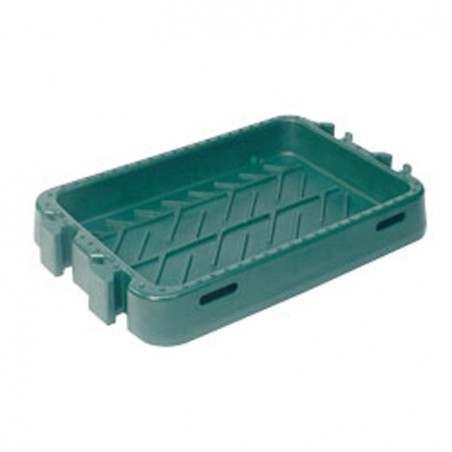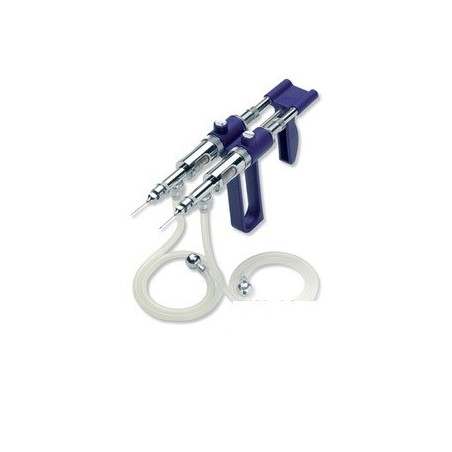Paper
Rebecca A. Ober, James B. Thissen, Crystal J. Jaing, Ada G. Cino-Ozuna, Raymond R.R. Rowland, Megan C. Niederwerder. Increased microbiome diversity at the time of infection is associated with improved growth rates of pigs after co-infection with porcine reproductive and respiratory syndrome virus (PRRSV) and porcine circovirus type 2 (PCV2). 2017. Veterinary Microbiology vol 208, pag 203 http://dx.doi.org/10.1016/j.vetmic.2017.06.023

What are they studying?
The objective of the study was to investigate the influence of the microbiome on the clinical and production outcomes after viral co-infections in swine
How was it done?
The hypothesis was that increased diversity of the intestinal microbiome provides increased resilience to subclinical respiratory viral infections in swine. The study used fifty 3-week-old PRRSV-negative pigs from a PCV2-positive breeding herd. Faecal samples collected at the beginning of the trial were submitted for analysis of the microbiota. Microbiome diversity was determined by calculation of the number of families and species detected in each pig. Following experimental challenge infections with PRRSV and PCV2 at 8 weeks of age, clinical outcomes, viraemia and weight were recorded. To ensure the analysis of subclinical infections, all pigs requiring Veterinary intervention were excluded from the trial. At 35 days post-infection, the 40 remaining pigs were weighed and classified into two groups, high and low growth rate, based on their ADG from challenge to 35 DPI. At day 42 post-infection all the pigs were weighed, euthanized and submitted for detailed post-mortem examination. Macroscopic and microscopic evaluation of lung lesions was carried out and scored from 0 to 4. The microscopic evaluation of lymphoid depletion was also scored from 0 to 3. Increasing scores reflected more severe pathology.
What are the results?
- Weight gain diverged after co-infection in the low ADG (0.775 +0.075 kg) and high ADG (0.903 +0.043 kg) groups. Out of the 50 pigs infected with PRRS and PCV2, 10 required treatment (20% morbidity). The final weight was statistically different between both groups (52.5+5.3 kg vs 57.1 + 2.9kg p=0.028)
- The high-growth-rate group had a statistically significant reduced PRRSV replication as measured by the 42-day area under the curve. The PCV2 data showed high variation, but indicated a tendency towards reduced viraemia in the high-growth-rate group.
- High-growth-rate pigs had lower lung lesion severity.
- In total, 29 microbial families and 112 microbial species were detected. The microbiome of high-growth-rate pigs had an increased diversity, a higher Firmicutes:Bacteriodetes ratio, more Rumincoccaciae, Streptococcaceae and reduced Methanobacteriaceae
What implications does this paper have?
Microbiome diversity and composition may influence the clinical and productivity outcome of infections with PRRSV and PCV2 in swine.
The study confirms the growth impact of PRRS and PCV2 co-infections even when the pigs are not showing overt clinical signs.
|
It is amazing to see, first hand, how science evolves. We have always believed that maintaining intestinal health was beneficial, but we would never have imagined how really important it can be. With the molecular biology techniques we have today, it is possible to study the microbiome in more detail and, therefore, establish relations that were impossible to find before. The first studies that related changes in the microbiome to health problems, other than intestinal, appeared in human medicine, specifically in the study of some of the problems in HIV-infected patients. In these patients, a relationship was found between certain microbiome profiles and the development of what has been known as precocious aging. In veterinary medicine, there were already some articles published that relate the microbiome of a few days-old piglets to their predisposition to suffer, or not, diarrhoeal processes after weaning. But this article relates different microbiome profiles to greater or lesser severity in clinical signs, lesions and viral load in a co-infection with PRRS and PCV2 viruses, opening a window of opportunity. Possible manipulation of the intestinal microbiome could be a very useful tool for swine health control, especially nowadays when the reduction of antimicrobials use has gone from being a fancy of some producers to a necessity. However, and unfortunately, we still do not know how to manipulate it so it changes into a specific profile. I can think of a lot of methods to be tested: Could faecal transplant techniques like those applied to humans be applied to pigs? Should we do the feedback differently from how we do it today, i.e. using faeces from healthy animals instead of sick ones? Could we manipulate the microbiome of piglets by changing that of their dams? I remember a presentation by Dr. Fernando Fariñas in which he emphasized the importance of the intestinal immune system; I think he mentioned that 70% of the cells of the immune system were in the intestine. In view of the results of the present study, it would seem that depending on which microbiome profile one has, the immune response would benefit or not in the presence of certain processes. In the future, we will probably know if these microbiome profiles must be different in order to improve the response to different processes, or if by achieving a specific profile the immune response will improve in all cases. I have no doubt that this type of study represents a whole world of opportunities that we will probably see come true in the coming years. |









